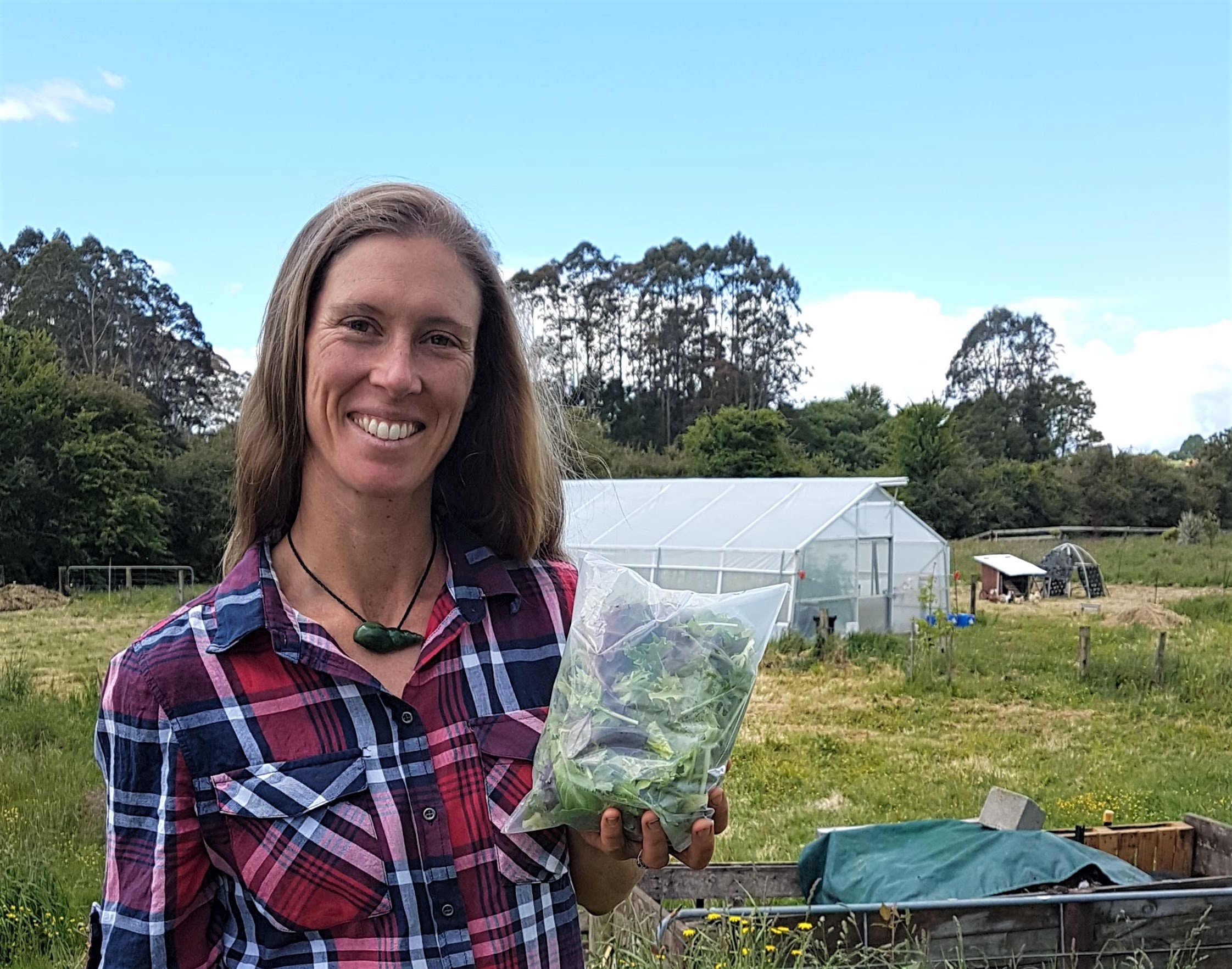INTRODUCTION
The Soil & Health Association of New Zealand is the largest membership organisation supporting organic food and farming in New Zealand and one of the oldest organic organisations in the world, established in 1941. The Association receives no government or other official support, nor is it sponsored or supported by any commercial organisation, political party, religion or other vested interest.
With every year that passes the vision of Soil and Health of an organic New Zealand becomes more relevant, more imperative, and in fact, more mainstream. The maxim of the organisation is “Oranga nuku – Oranga kai – Oranga tāngata, Healthy Soil – Healthy Food – Healthy People”. This extends into the sphere of climate change, as healthy, living soil is potentially the most important carbon sink our planet has. For planetary health (and therefore our own health) not only must we stop the burning of fossil fuels, but we must change our actions so as to sequester the existing carbon from the air into soil and biomass. Organic and regenerative[1] production methods, which maximise the accumulation of soil organic matter, are key to sequestering atmospheric carbon and keeping global warming within 1.5ºC.
BACKGROUND SCIENCE
This section is aimed not at outlining the climate crisis, which the Bill recognises, but at highlighting the key role that organic and regenerative agriculture can play in ameliorating climate outcomes.
The degradation of soils from unsustainable “conventional” agriculture has released billions of tons of carbon into the atmosphere[2]. It is estimated that the world’s cultivated soils have lost between 50 and 70 percent of their original carbon stock[3]. Conventional agricultural methods, such as the use of chemical biocides and fertilisers, heavy mechanical tillage, mono-cropping and overgrazing, have killed or rendered ineffective a multitude of living organisms within soils, leading to the oxidation of soil organic carbon and its release in gaseous forms. Although classed as “conventional” and therefore normal, these methods of agriculture are new, having arisen only since the “Green Revolution” after the Second World War. In 2019 we have enough evidence that these new ways cannot be continued if we are to survive.
According to soil scientists, at current rates of soil destruction (i.e. decarbonisation, erosion, desertification, chemical pollution), within 50 years we will not only suffer further serious damage to public health due to a qualitatively degraded food supply, but we will literally no longer have enough arable topsoil to feed ourselves[4]. Without protecting and regenerating our arable soils and grazing lands, it will be impossible to feed the world adequately and keep global warming below 1.5ºC.
So we come back to the key focus of the Soil and Health Association: how to grow food in such a way that soil, human and overall planetary health are supported? There is a growing body of research and many examples, from within NZ[5] and from overseas[6], showing how to manage land profitably to meet human needs, while sequestering carbon. These carbon farming methods have been largely ignored as we scramble for solutions to the global climate catastrophe that faces us. For too long, the focus of NZ government has been on offsetting carbon emissions from conventional agriculture by purchasing overseas carbon credits, or planting monocultures of pine trees to sequester carbon within NZ. Of course, we are all in favour of planting more trees, however this does to some extent detract from the opportunities that exist in pastoral, silvopastoral and arable systems. NZ needs to move more urgently in the direction of changing agriculture through appropriate policy and regulation, rather than avoiding the necessary change to appease strong vested interests or maintain lucrative but unsustainable export industries.
OUR POINTS ON THE BILL ITSELF
There are several positive things about the Bill which we wish to tautoko:
- We support the Bill’s objective of limiting warming to 1.5ºC. This target should definitely be embedded in the law, and to do anything less would be ineffective.
- We support the creation of a framework for five-yearly emissions budgets, providing both short term and long term certainty about how to achieve our reduction targets. The framework for these budgets makes it clear that NZ needs to respond through real reductions, with tight conditions around the use of offshore credits.
- We support the establishment of an independent Climate Change Commission. This will be essential for ensuring robust advice on what our emissions budgets should be and how to stay within them.
- We support the requirement for NZ to start planning now for climate change adaptation.
Having said this, we believe the Bill has not gone far enough. To limit warming to 1.5ºC, New Zealand has a limit on our total remaining greenhouse gas emissions. Our pathway to net-zero must stay below this limit. The Intergovernmental Panel on Climate Change says this pathway requires carbon emissions to halve by 2030 and reach zero before 2050. Aotearoa New Zealand has the tools to achieve deep emission reductions in the next decade, as long as we have the legislation to back them.
We want this Bill to ensure an emissions pathway that limits our contribution to warming to no more than 1.5ºC. The Climate Commission must ensure we are on the right path, acknowledging New Zealand’s historical emissions. The Bill in its current state will not ensure our contribution to limiting warming to 1.5ºC.
Therefore we wish to propose the following revisions to strengthen its effectiveness:
- The 2050 target is explicitly referred to in the Bill, but there needs to be an interim target for non-methane gases of a 50% reduction of 2017 levels by 2030.
- There should be a requirement for the Climate Commission to determine New Zealand’s total remaining carbon emissions to meet the 1.5ºC target, accounting for historical emissions, by 31 December 2021.
- There need to be more clear timeframes for the government to make plans to meet future budgets.
- Section 5ZJ must be removed to allow the court to take other steps to remedy ineffective budgets.
- There needs to be a change to Section 5ZK so that government bodies must take targets and carbon budgets into account when making other decisions. The law must require that there be a whole of government approach. We can increase accountability by making this enforceable through Judicial Review. The public deserves to be able to hold decision makers to account.
- This Act should trump the Resource Management Act, which currently does not allow climate change to be considered when issuing resource consents. Climate change should be an overriding consideration like Te Titiri o Waitangi, or human rights legislation, not “just another thing” to consider (and then write off).
- There should be a gross emissions limit, and a limit to how much emissions can be offset. Under the current wording, all long lived gases (e.g. CO2) could be entirely offset by planting trees without actually having to reduce emissions. This has been New Zealand’s policy for many years, and has led to our current state of emissions: 65% above 1990 levels. Note that the EU’s policy is “at least 40%” below 1990 levels by 2030 and it looks like it will make it. Tree planting as a mechanism to offset emissions should be a last resort and this should be recognised in the legislation, e.g. no more than 30% of the obligation may be offset with forestry, with this percentage reducing every year. All trees planted as a carbon sink will carry a future liability to pay back the credits if they are felled, effectively locking up the land for future generations.
- There should be a prohibition of the use of international credits to promote long-term certainty and accountability.
- Regarding the biogenic methane emissions target, the mention of “at least a 24% – 47% reduction in methane” means we could go further than this goal by 2050. We would like to see a faster reduction earlier. Instead of “10% less than 2017 emissions by the calendar year beginning on 1 January 2030” we think this figure should be should be at least 20% below 2017 levels by 2030. Measured over the first 20 years, methane is 86 times more powerful and damaging than carbon dioxide, therefore we need to focus on reducing biogenic methane emissions more strongly. Methane is NZ’s biggest chance to make a difference quickly. The 2050 methane target needs to be consistent with the 1.5ºC limit to global warming.
- Agricultural representation on the Climate Change Commission should move to those with experience with proven sustainable organic and regenerative agro-ecological systems approaches. While the Soil & Health Association welcomes technological innovation to address climate change we need to take a precautionary approach to new and unproven interventions in agriculture.
- Action plans should ensure that emissions reduction measures do not compromise the protection of indigenous ecosystems.
- There should be clauses in the Act that properly honour Te Tiriti o Waitangi.
The Soil & Health Association of New Zealand wishes to speak to its submission.
NZ EXAMPLES OF ORGANIC AND REGENERATIVE FARMS
Biofarm, Palmerston North https://www.facebook.com/pg/BiofarmOrganic/
Bostock’s Organic Free Range Chicken, Hastings https://bostocksorganic.co.nz/
Field to Feast Organics, Christchurch http://www.canterburyorganic.org.nz/field-to-feast-organics/
Grow Together Farm, Rotorua https://www.growtogetherfarm.co.nz/
Harts Creek Farm, Canterbury, http://www.hartscreekfarm.co.nz/
Kotare Village, Wairoa http://kotarevillage.org.nz/regenerative-agriculture/
Lawson’s True Earth, Hastings https://trueearth.co.nz/
Lux Organics, Rotorua https://www.luxorganics.co.nz/
Mangarara Station, “The Family Farm”, Hawkes Bay https://www.mangarara.co.nz/
Milmore Downs, North Canterbury http://www.milmoredowns.co.nz/
Puramahoi Fields, Takaka https://www.puramahoifields.com/
Pikiroa Farm, Te Awamutu
Rainer Ramharter, Lincoln, Canterbury https://www.facebook.com/Ramharter-Organic-Farm-575814699192206/
Six Toed Fox Organics, Tauranga https://www.sixtoedfoxorganics.co.nz/
Spring Collective Organics, South Canterbury https://www.facebook.com/springcollectiveorganics/
Winiata Dairy Farm, Rotorua winiatat@farmside.co.nz, 07 333 2139.
[1] As coined and defined by the Rodale Institute https://rodaleinstitute.org/
[2] https://www.onpasture.com/wp-content/uploads/2017/10/Lal-Soil-carbon-sequestration-to-mitigate-climate-change.pdf
[3] https://e360.yale.edu/features/soil_as_carbon_storehouse_new_weapon_in_climate_fight
[4] https://regenerationinternational.org/why-regenerative-agriculture/?fbclid=IwAR219PNjLCveGhUgdavaefaXNVjrB4DJfik2NN441hwf-lURgj9zkaCjkS0
[5] See the end of this document for a list of organic and regenerative NZ farms.
[6] Toensmeier, E. 2016. The Carbon Farming Solution – A Global Tookit of Perennial Crops and Regenerative Agriculture Practices for Climate Change Mitigation and Food Security. Chelsea Green Publishing, Vermont, U.S.A.



